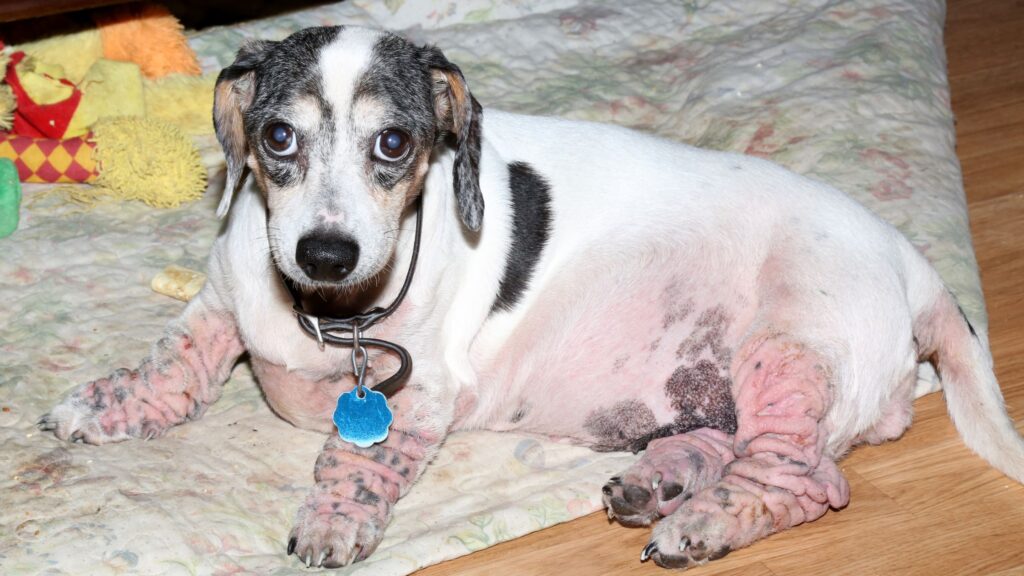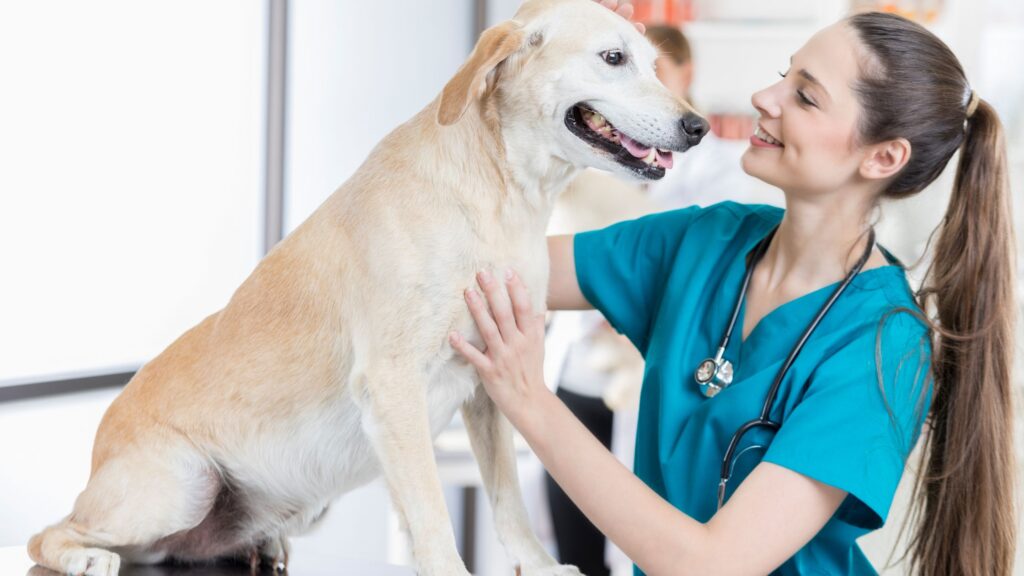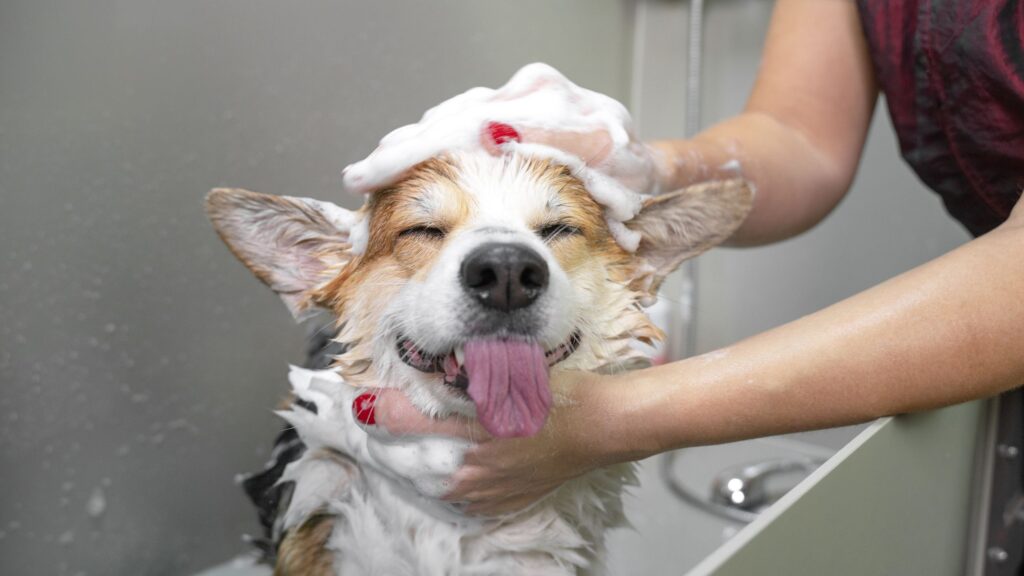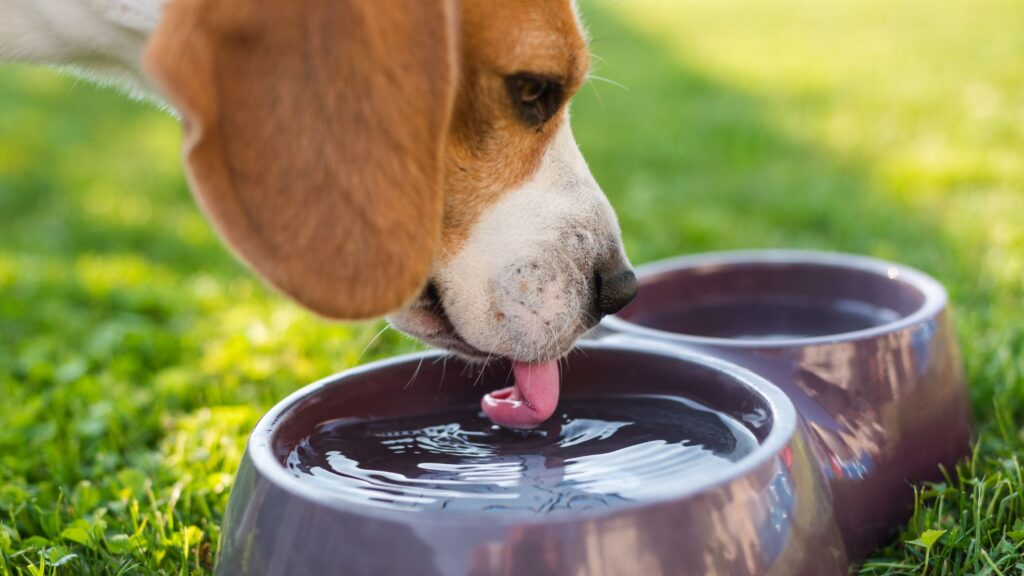Noticing your dog scratching more than usual or spotting patches of irritated skin can be concerning for any pet owner, this might be skin issues. Skin and coat issues in dogs aren’t just uncomfortable for your furry friend—they can also be signs of underlying health problems that need attention.

Whether it’s dry skin, hair loss, or constant itching, understanding what’s causing the issue is the first step toward helping your dog feel better. In this guide, we’ll walk you through practical steps you can take to address these issues, from checking for parasites to making diet changes, so your dog’s skin and coat can get back to looking and feeling their best.

1. Consult Your Veterinarian
The first and most important step when you notice skin or coat issues in your dog is to consult your veterinarian.

Skin problems can arise from a wide range of causes, such as allergies, parasites, infections, or even underlying health conditions like hypothyroidism or autoimmune diseases.
A vet can perform skin scrapings, blood tests, or allergy testing to diagnose the root cause of the problem. Early diagnosis is key to preventing minor issues from becoming chronic or severe.
Your vet may prescribe medications like antibiotics, antifungals, or antihistamines depending on the diagnosis.
2. Check for Parasites
Parasites like fleas, ticks, and mites are among the most common culprits behind skin irritation, itching, and hair loss in dogs.
Regularly inspect your dog’s coat and skin, especially around common hiding spots like the ears, belly, armpits, and the base of the tail. Look for signs like small black specks (flea dirt), redness, scabs, or the parasites themselves.
Even if you don’t see live parasites, your dog might still be affected by flea allergies. Using veterinarian-recommended flea and tick preventatives year-round can help protect your dog. If mites are suspected, your vet might recommend specific treatments for mange.
3. Evaluate Their Diet
A balanced diet plays a crucial role in maintaining your dog’s skin and coat health.
Nutritional deficiencies, particularly in essential fatty acids like Omega-3 and Omega-6, can cause a dull coat, excessive shedding, and itchy skin. High-quality dog foods often contain these nutrients, but supplements like fish oil or flaxseed oil can be added if needed.
Additionally, some dogs may have food allergies or intolerances that manifest as skin issues. Common allergens include beef, chicken, dairy, and grains. Your vet might recommend an elimination diet to identify potential triggers.
4. Bathe with the Right Products
Using the wrong shampoo or bathing your dog too frequently can strip their skin of natural oils, leading to dryness, flakiness, and irritation.

Always choose bath products that are specifically formulated for dogs, preferably hypoallergenic or medicated if your dog has sensitive skin or a diagnosed skin condition. Ingredients like oatmeal, aloe vera, and coconut oil can soothe irritated skin.
Avoid using human shampoos, as they can disrupt your dog’s skin pH balance. Bathing frequency varies depending on the breed and skin condition, but generally, once every 4-6 weeks is sufficient unless otherwise directed by your vet.
5. Keep Up with Regular Grooming
Regular grooming is essential for maintaining a healthy skin and coat.
Brushing helps remove dead hair, dirt, and debris while stimulating the skin and distributing natural oils that keep the coat shiny. It also helps prevent matting, which can trap moisture and cause skin irritation.

The type of brush and grooming frequency will depend on your dog’s breed and coat type—short-haired breeds may require less frequent brushing compared to long-haired or double-coated breeds. Grooming also allows you to check for lumps, bumps, or signs of skin irritation early.
6. Monitor for Allergies
Allergies are a common cause of skin problems in dogs and can stem from food, environmental factors (like pollen, dust mites, or mold), or even contact allergens like certain fabrics or cleaning products.
Symptoms often include constant itching, licking, redness, hot spots, and recurrent ear infections. If you suspect allergies, your vet might recommend an elimination diet, skin tests, or blood tests to identify the allergen.
Treatment options include antihistamines, corticosteroids, medicated shampoos, or even allergy shots (immunotherapy) for severe cases. You can visit this site for more information about allergies. Click Here
7. Ensure Proper Hydration
Dehydration can lead to dry, flaky skin and a brittle coat. Ensure your dog has access to fresh, clean water at all times, especially during hot weather or after exercise.

Dogs that eat primarily dry kibble may benefit from added moisture in their diet through wet food, bone broth, or water-rich fruits and vegetables (like cucumbers or watermelon, in moderation). Proper hydration supports overall health, including skin elasticity and coat shine.
8. Address Environmental Factors
Environmental conditions like extreme weather, humidity, or household allergens can affect your dog’s skin.
Dry indoor air from heating systems during winter can cause flaky skin, while hot, sunny weather can lead to sunburn, especially in short-haired or light-colored dogs.
Consider using a humidifier in dry conditions and applying dog-safe sunscreen when spending time outdoors in the sun. Also, keep your home clean to minimize exposure to dust mites, mold, or other potential allergens.
9. Look for Signs of Infections
Bacterial and fungal infections can develop from untreated skin irritations or underlying conditions.
Common signs include persistent itching, redness, swelling, foul odors, oozing sores, or hair loss. Yeast infections often affect areas like the ears, paws, and skin folds, while bacterial infections can cause pustules or scabs.
If you notice these symptoms, it’s important to seek veterinary care promptly. Your vet may prescribe antibiotics, antifungal treatments, or medicated shampoos. Left untreated, infections can become severe and lead to more complicated health issues.
10. Consider Stress and Anxiety
Behavioral issues like excessive licking, chewing, or scratching can stem from stress or anxiety, leading to skin problems over time.
Changes in the household, lack of mental stimulation, or separation anxiety are common triggers. Providing regular exercise, mental enrichment (like puzzle toys), and a stable routine can help reduce stress.
In some cases, calming aids like pheromone diffusers, anxiety wraps, or even behavioral therapy may be beneficial. If behavioral issues persist, consult your vet or a professional dog trainer for guidance.
Keeping Your Dog’s Skin and Coat in Top Shape
Your dog’s skin and coat are more than just about looks—they’re indicators of their overall health. By staying proactive with regular vet check-ups, grooming, a balanced diet, and monitoring for environmental or behavioral triggers, you can help your pup stay comfortable and happy.
Remember, catching issues early can make a world of difference, so trust your instincts and seek veterinary advice when something doesn’t seem right. A little care goes a long way in keeping your dog’s skin healthy and their coat shiny—and seeing them wag their tail in comfort is the best reward of all!
More Blogs:
- Travel Tips for Snub-Nosed Pets: What You Need to Know
- 10 Natural Solutions for a Happier, Healthier Dog Stomach
- Help! My Dog Has Skin Issues—Here’s What to Do Next
- 9 Powerful Supplements to Strengthen Your Dog’s Immune System
- Pet-Friendly Winter Hiking: Safety Tips You Need To Know
- Navigating Winter Road Trips with Pets: A Survival Guide